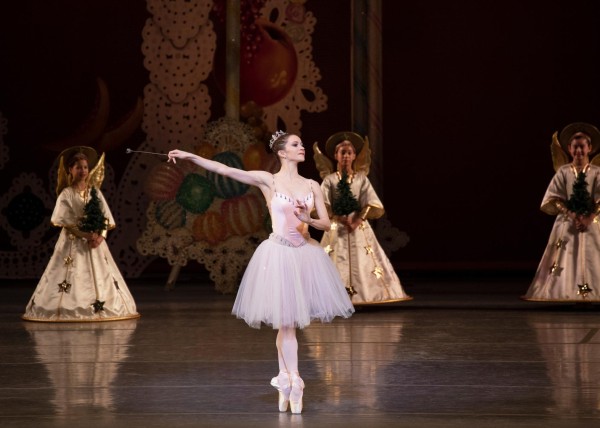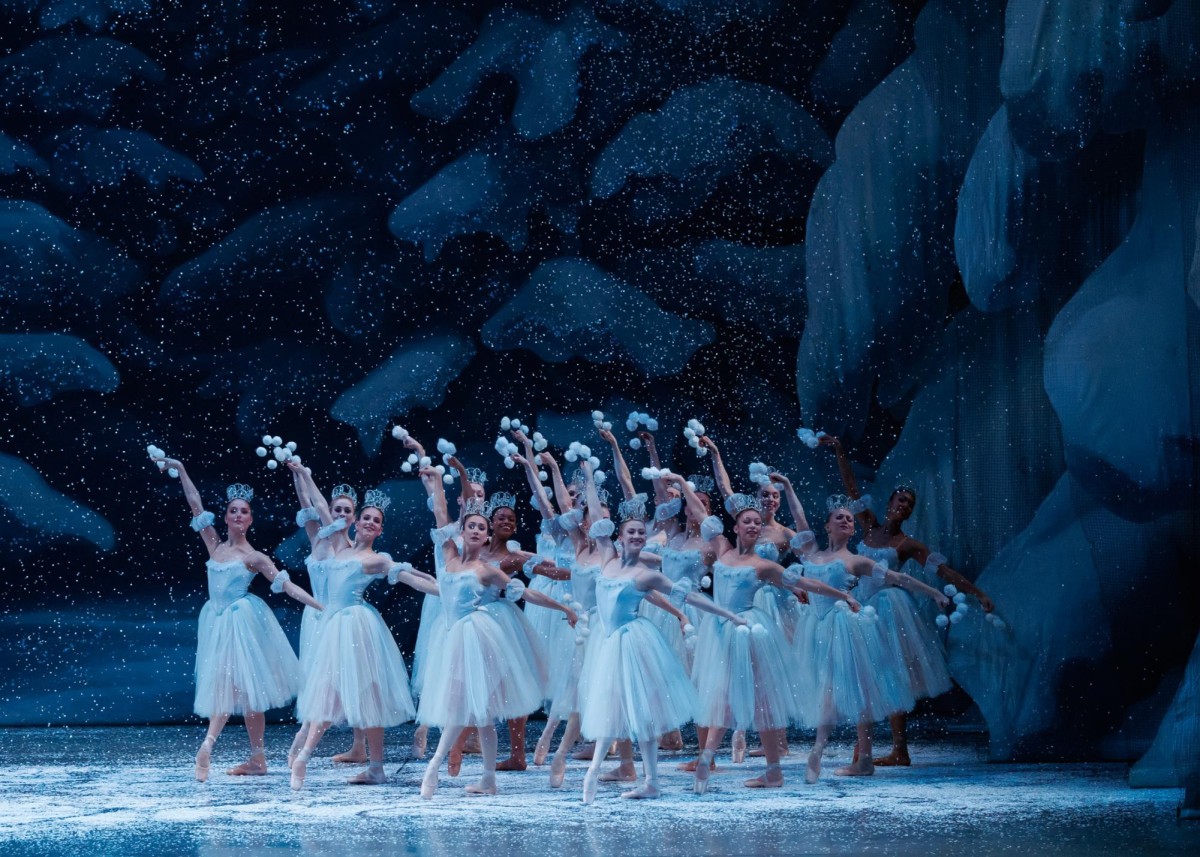Every time I hear the first few notes of Pyotr Ilyich Tchaikovsky’s “The Nutcracker,” some of the happiest memories from my childhood come to mind. Nights spent doing homework on the floor of a dressing room, and hours of rehearsals and costume fittings were a regular part of my December — and without a doubt my favorite part of the year. Now that I’ve left the tutus and pointe shoes behind, the closest I can get to those memories is watching the ballet live.
The Nutcracker is a gateway to ballet and dance for a lot of people. You’d be hard-pressed to find a dancer who doesn’t have a story of the first time they saw the production, and how it led them to sign up for their first class. Even if your career as a dancer only lasted through your elementary school years, you’re likely to perk up when you hear “Waltz of the Flowers” or “Dance of the Sugar Plum Fairy” while you’re shopping for the holidays.
If you’ve never seen a ballet and you find yourself in the city during December, it’s hard to find a better introduction to the art form than “The Nutcracker” — it’s at least worth giving it a shot before deciding that ballet is not for you. As a student in New York City, there are a number of local productions of “The Nutcracker” to choose from. My personal favorite is the New York City Ballet’s, choreographed by company co-founder George Balanchine.
The ballet begins with a Christmas party in a Victorian-style home, but quickly takes a fantastical turn, featuring battles between mice and toy soldiers, snow storms and dancing candy canes. During the first act, adults and children alike dance through Christmas Eve festivities, and Marie — the young protagonist of the production — is gifted a wooden nutcracker doll by Herr Drosselmeyer, a mysterious party guest. Following a dramatic battle where Marie’s nutcracker is brought to life, the ballet transforms into a tale of Christmas trees, a magical candyland and mesmerizing snowflakes.
The Land of Sweets, where the ballet’s second act takes place, is a place for children and adults alike. Its classic orchestral tracks are some of ballet’s most famous. Balanchine’s choreography, marked by quick steps and impressive musicality, makes every minute of the two-hour production worth your attention.
Unlike in most ballets, many in the cast of “The Nutcracker” are children, who play everything from partygoers to mice to candy canes. The production is also set apart by its vibrant sets and costumes, as well as magical staging tricks, like when the Sugar Plum Fairy appears to be gliding across the stage in the second act, or when Marie and the nutcracker prince fly away on a sleigh at the end of the show.
“There’s magic happening on stage. It makes it extra fun for kids and it makes it really a magical Christmas miracle experience,” Megan Fairchild, NYCB principal dancer and one of the dancers performing the role of Sugar Plum Fairy this year, told WSN. “The snow scene is truly a blizzard of dancers running around in the snow. There’s wind being blown from the wings so that the snow falling from the sky is going around in circles. It’s next-level. And also, it’s the holiday tradition of New York City.”

Fairchild has been dancing since she was a young child, and doing “The Nutcracker” for just as long. She remembers being 8 years old and watching a production of “The Nutcracker” put on by Ballet West, a ballet company and school in Utah, where she trained before joining the School of American Ballet. Fairchild auditioned for the show the next year, and it quickly became a holiday tradition. She’s performed her way from Clara — another name for Marie’s character in many productions — in Utah to the Sugar Plum Fairy on one of New York City’s best-known stages.
“It’s a generational thing for all of us. And it’s something we’ve done every year, this time of year. It’s just part of everyone’s tradition as a dancer,” Fairchild said. “You’re the tradition for many people in New York, and the people that come to New York for the holidays.”
“The Nutcracker” is one of Tchaikovsky’s last ballet scores, and was originally performed at St. Petersburg’s Mariinsky Theatre in 1892. The story is loosely based on E.T.A. Hoffman’s “The Nutcracker and the Mouse King,” and was adapted by Balanchine in 1954. Hoffman’s original story is closer to a child’s nightmare than a candy-filled dream, something unrecognizable to the sugar plums and snowflakes in the ballet.
Balanchine’s interpretation of the ballet is performed across the country by companies like Pacific Northwest Ballet, Miami City Ballet, Oregon Ballet Theatre, Philadelphia Ballet and Alabama Ballet, and dozens of choreographers have adapted their own versions. Many of these productions have included racist Asian tropes in their choreography and staging, which some companies, including NYCB, have been working to eliminate.
Several artistic directors have signed a petition created by the organization Final Bow for Yellowface, co-founded by NYCB soloist Georgina Pazcoguin and Gold Standard Arts Foundation president and former NYU fellow Phil Chan, in committing “to eliminating outdated and offensive stereotypes of Asians (Yellowface) on our stages.”
Companies around the world have taken different approaches to removing harmful stereotypes from their productions. At NYCB, the show no longer includes problematic mustaches, bamboo hats or racist finger points during the Tea scene, one of the dances in the Land of the Sweets, and the names of many other dances in the second act are being reimagined.
“It’s no longer this archaic, antiquated thing that is not appropriate for our generation,” Fairchild said. “It just feels good that this movement is happening, and everybody is on board with retelling and telling the same story in a more appropriate way.”
For Fairchild, the show is also about watching the progress made by her students at the School of American Ballet, some of whom have now joined the company and are dancing the same roles she performed early in her career. Dancing certain roles in the corps de ballet — or “body” of the ballet — like the snowflakes or flowers in “The Nutcracker,” is a rite of passage for many young dancers.
In addition to dancing through NYCB’s 47-show run of “The Nutcracker,” Fairchild also takes night classes at NYU Stern, where she is working toward her MBA. Fairchild said she is in a program with other students who work during the day, and that her experience as a dancer has helped her have a different and more creative perspective in the classroom.
“The Nutcracker” acts both as a reminder of cherished memories for former dancers, and an introduction to the world of ballet for new audiences. I attended the performance on Nov. 30, and was seated next to a young girl who was dressed in her very finest dress. She refused to sit down throughout the entire first act, standing on her tippy toes pressed against the barrier of the mezzanine. I saw myself reflected in her, as she twirled her way through the aisles and watched who she called “princesses” in awe.
“I’ve been doing Sugar Plum for 20 years now,” Fairchild said. “At this point it’s just fun to get to enjoy myself in something I have a lot of experience in. Getting to be the master of ceremonies of all the magic happening up on stage is really fun.”
“The Nutcracker” is running through Dec. 31 at the David H. Koch Theater. Tickets are available here.
Contact Julia Diorio and Carmo Moniz at [email protected].























































































































































